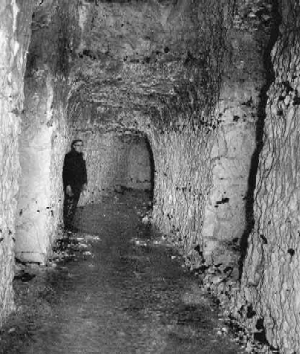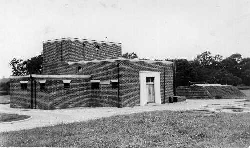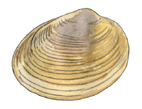Water abstraction:
An Act of Parliament in 1940 allowed Gosport Waterworks Company to begin to extract water from the chalk aquifer under The Moors. It was to act as an additional supply in case the pumping station at Soberton, that supplied all of the water for the population of Gosport, was hit in an air raid. After the war, a permanent works was constructed at the site. These included the excavation of adits, tunnels dug out of the chalk below the pump to help funnel water to it.


